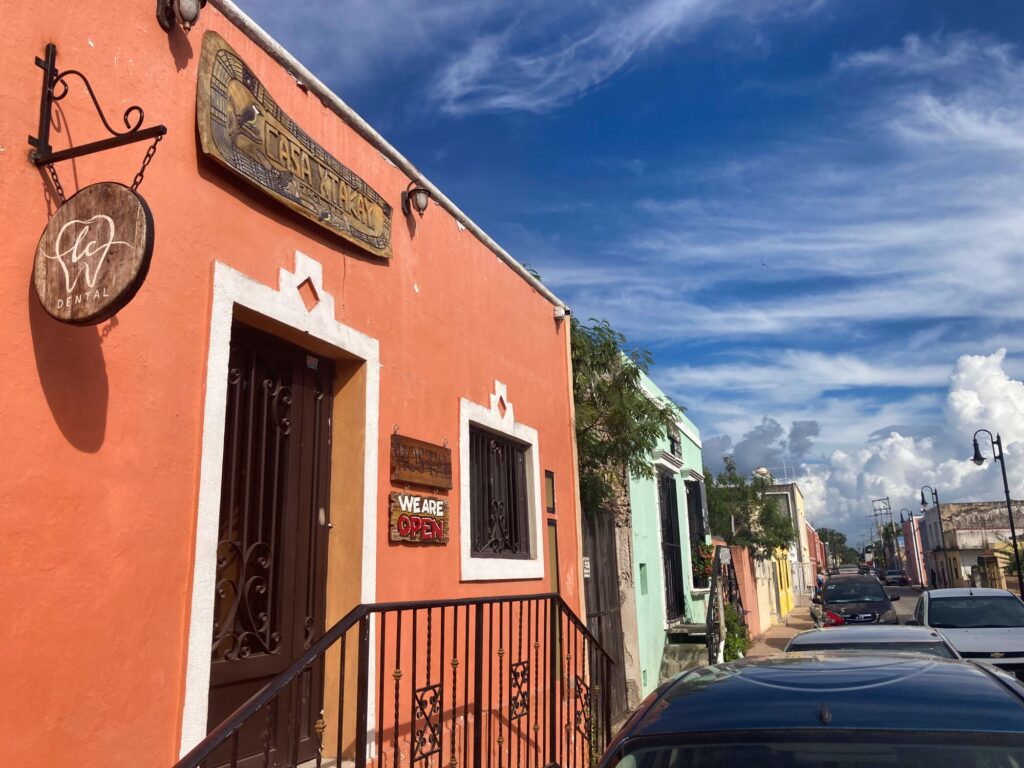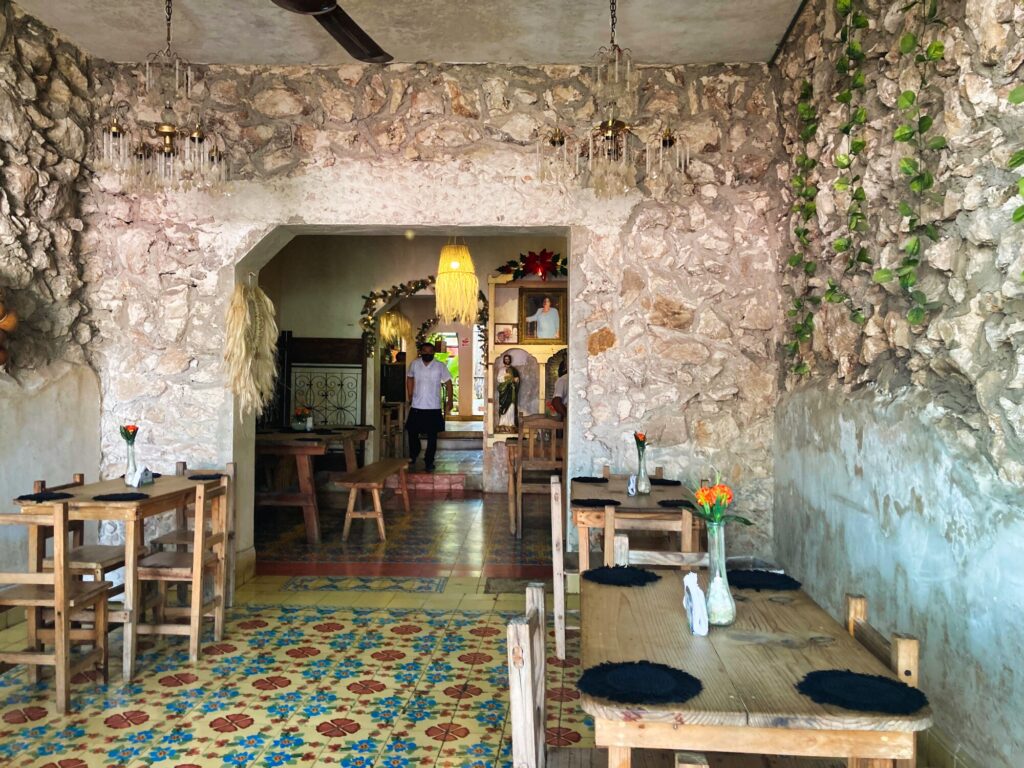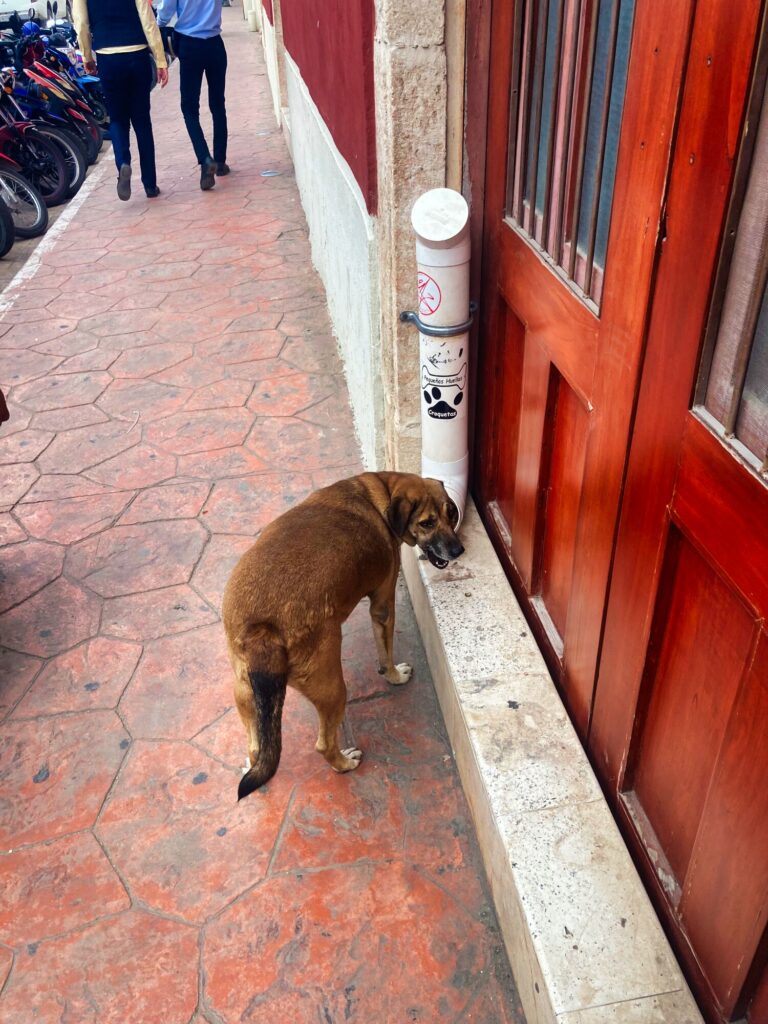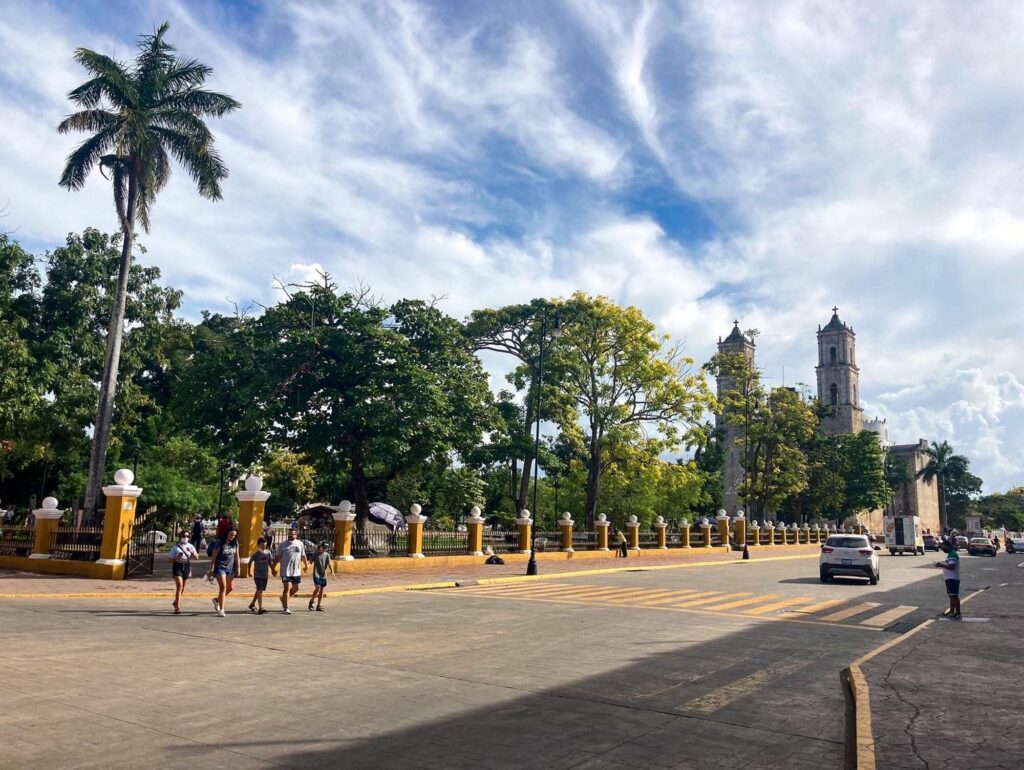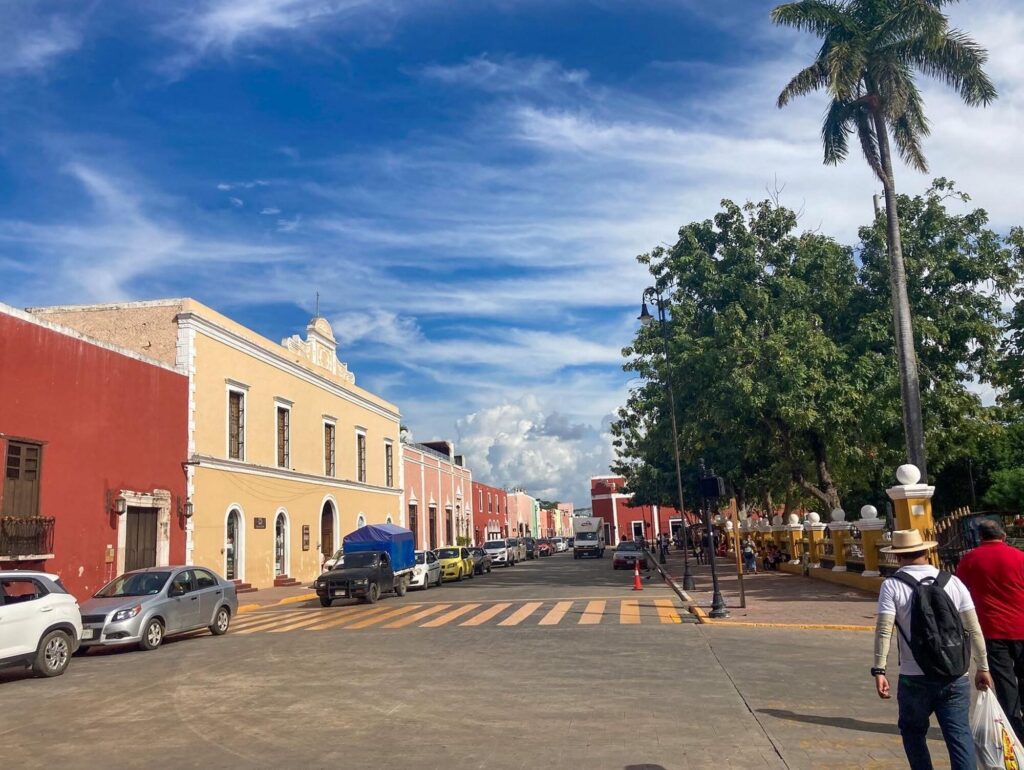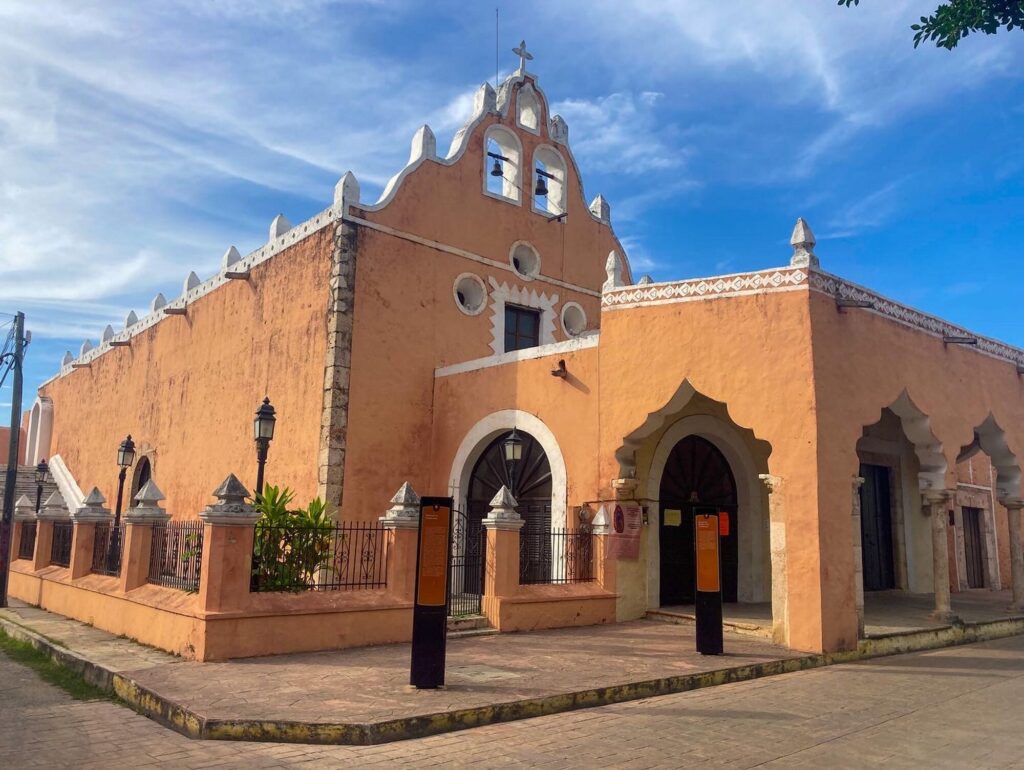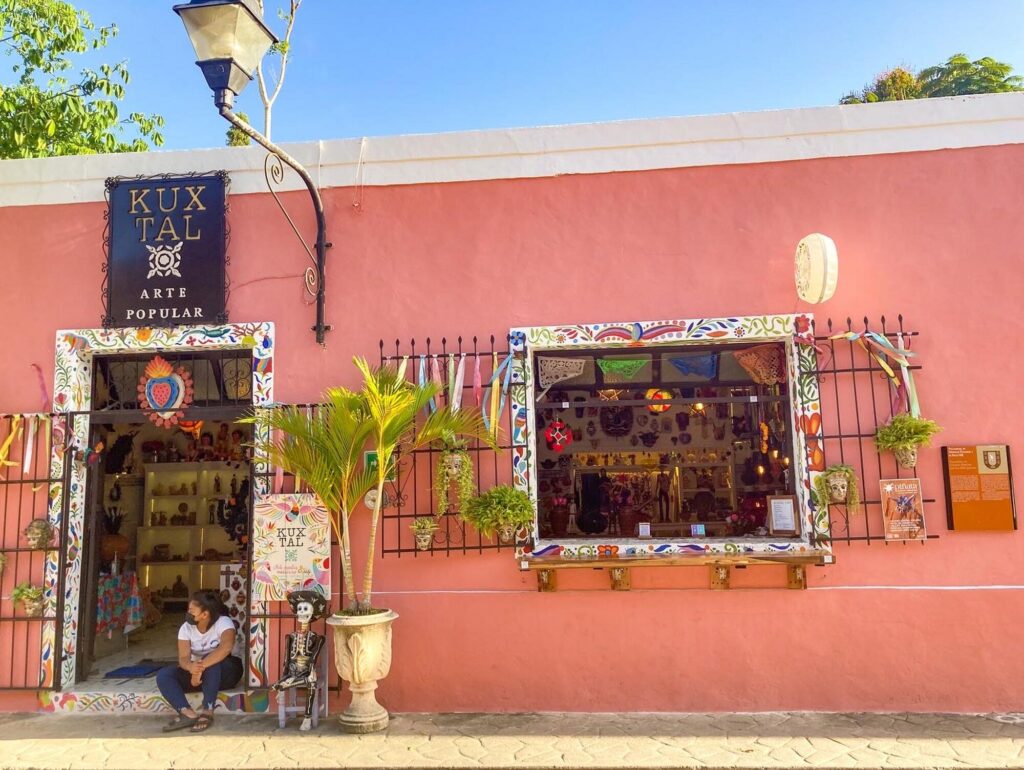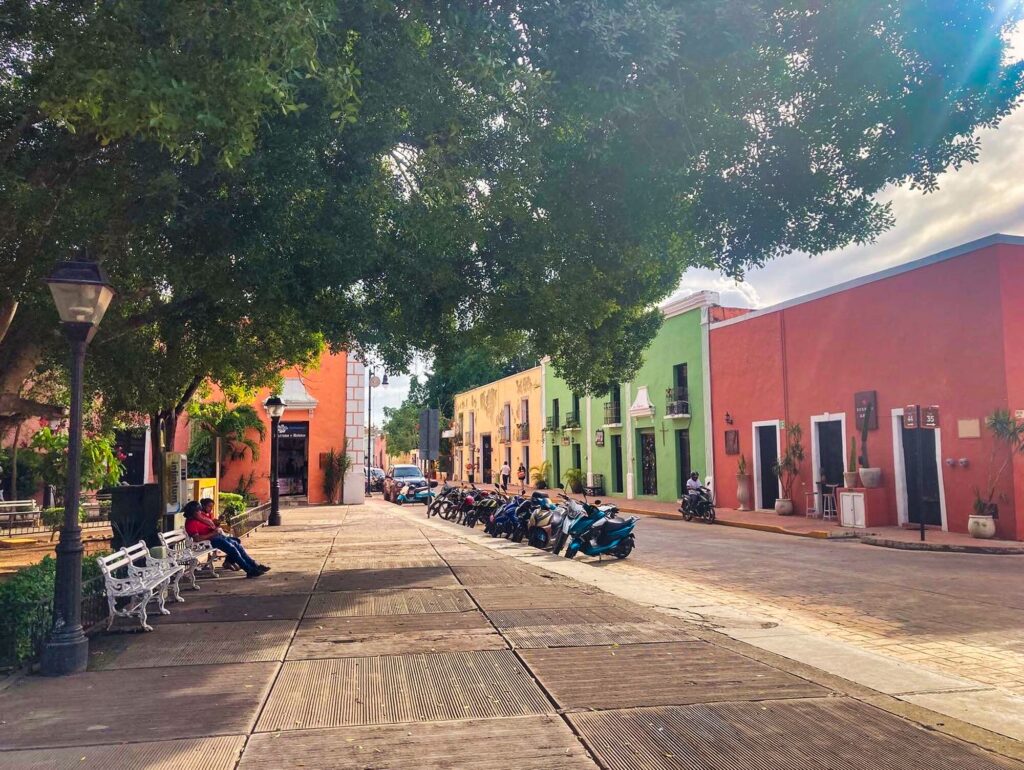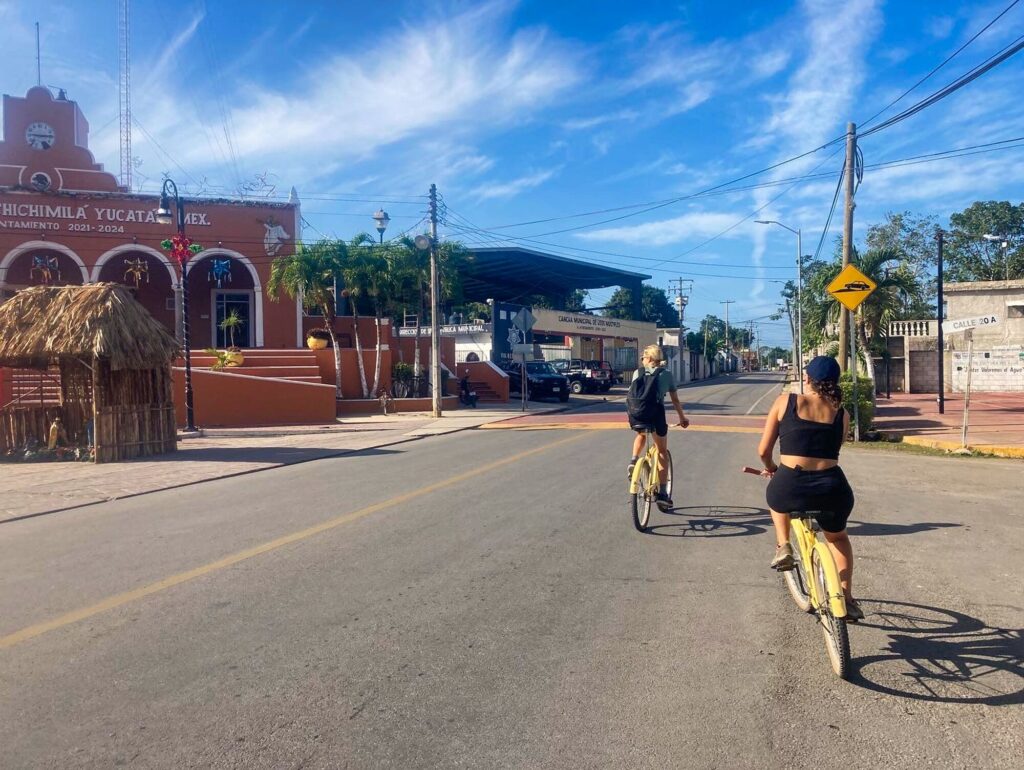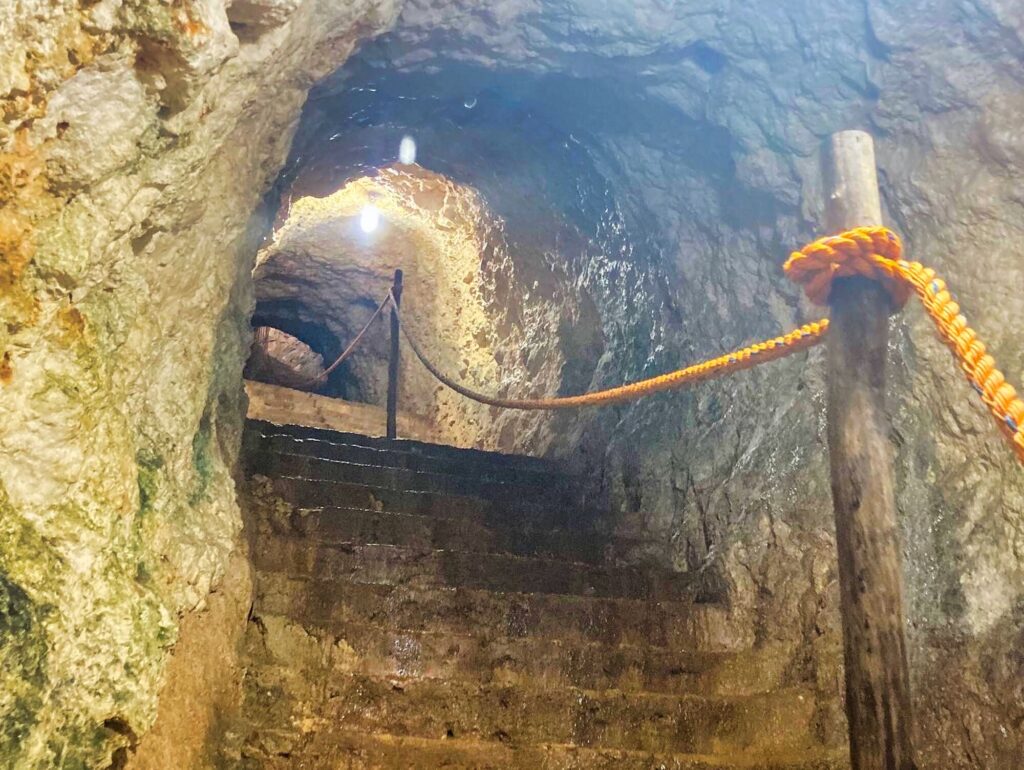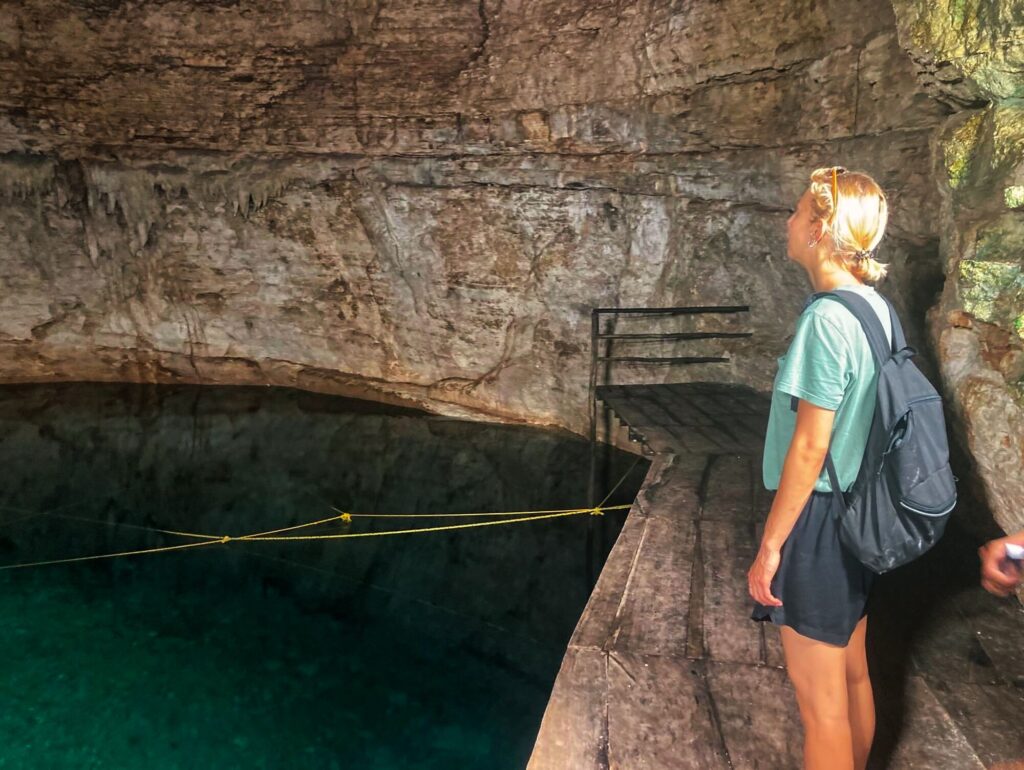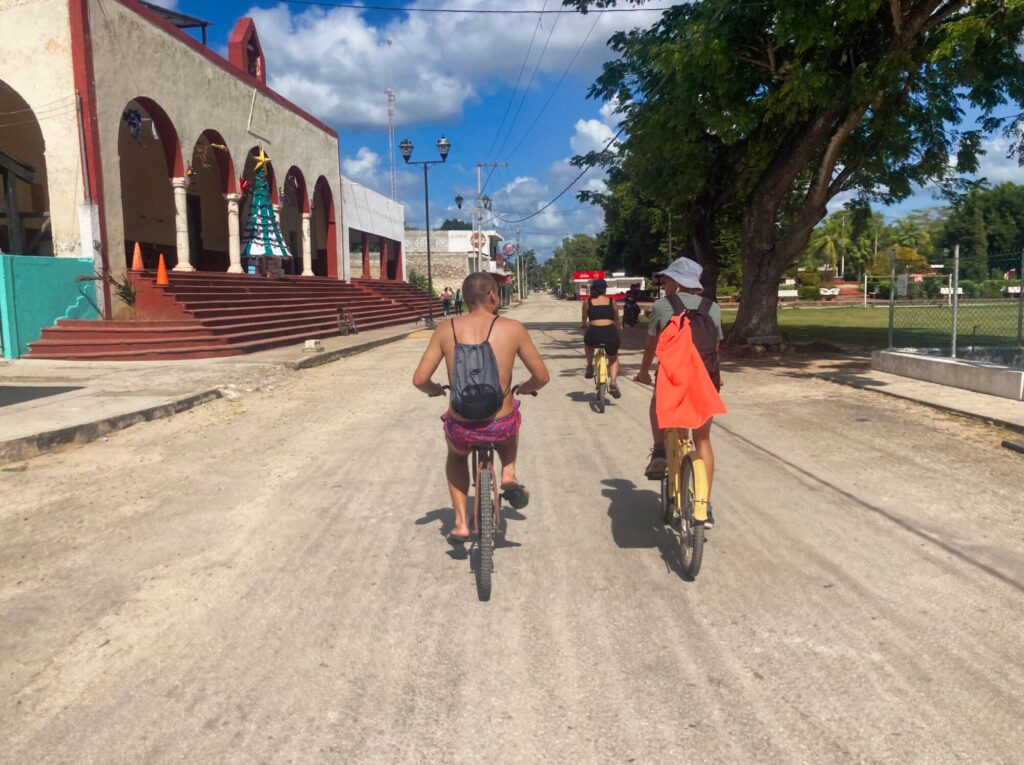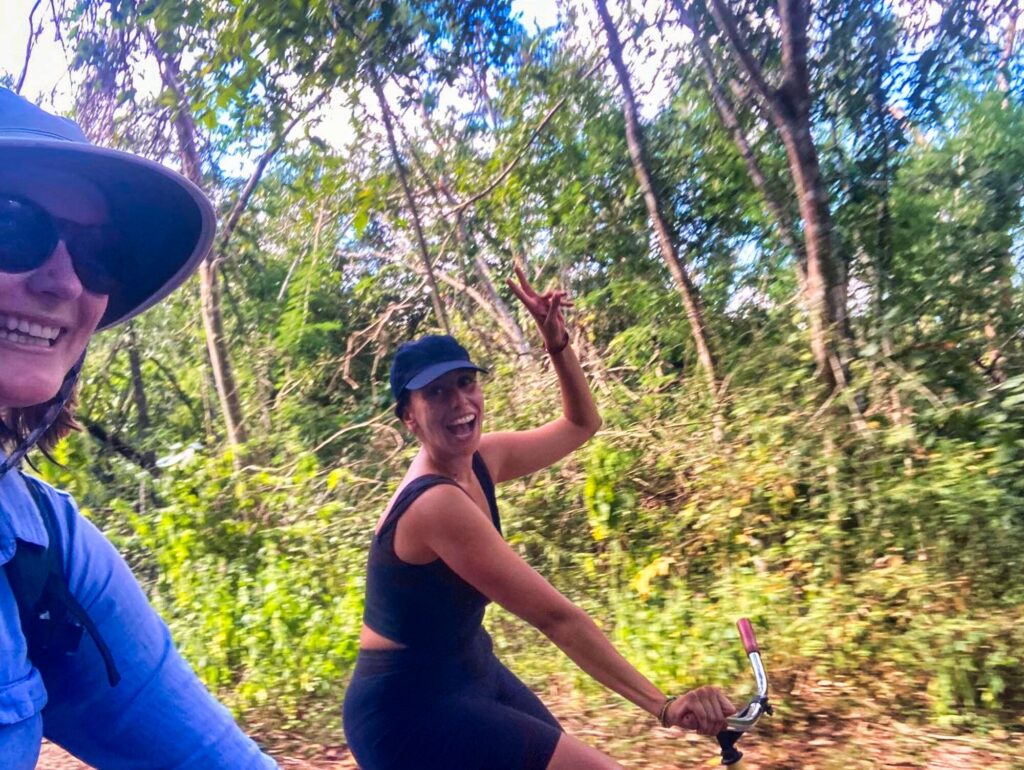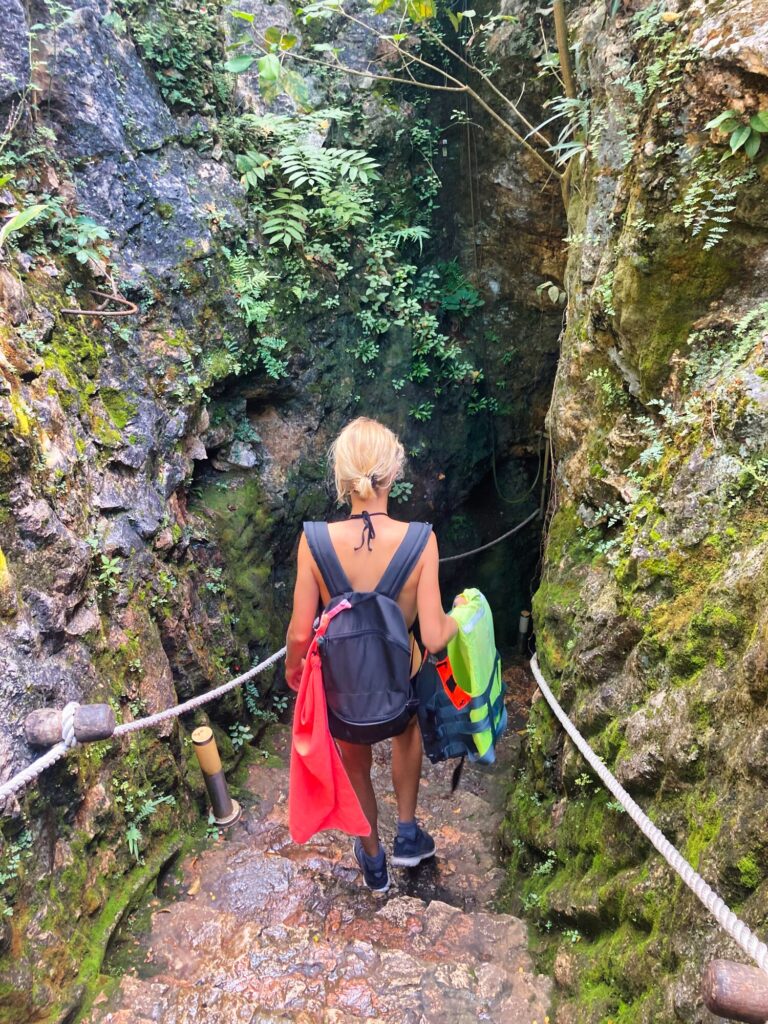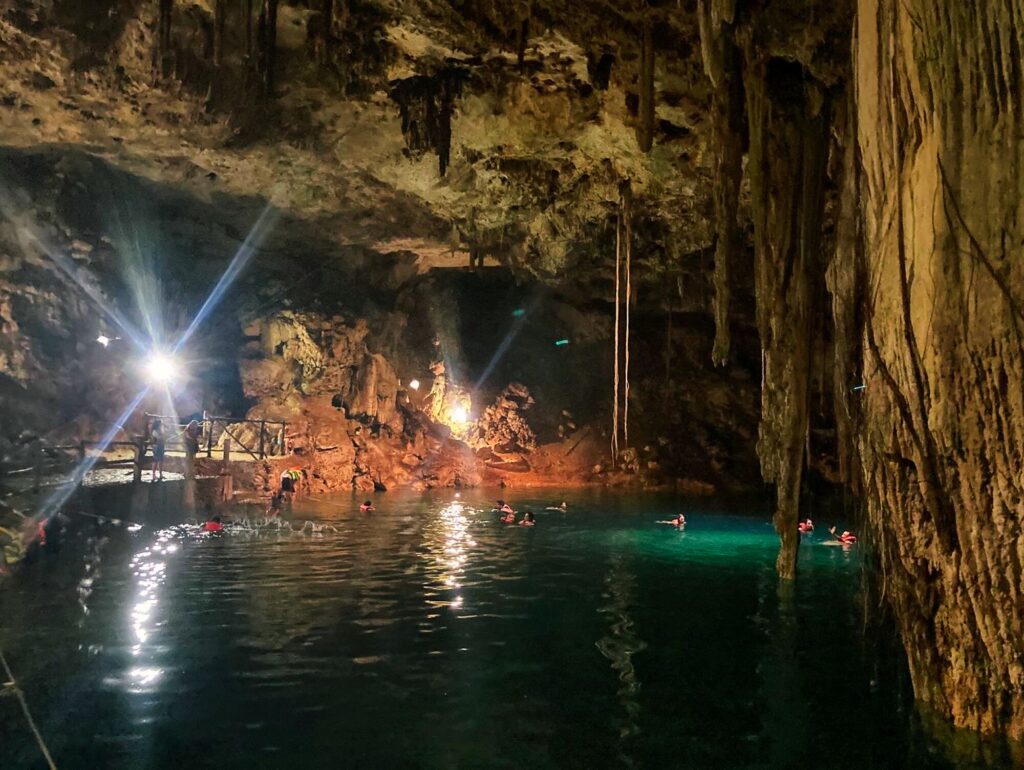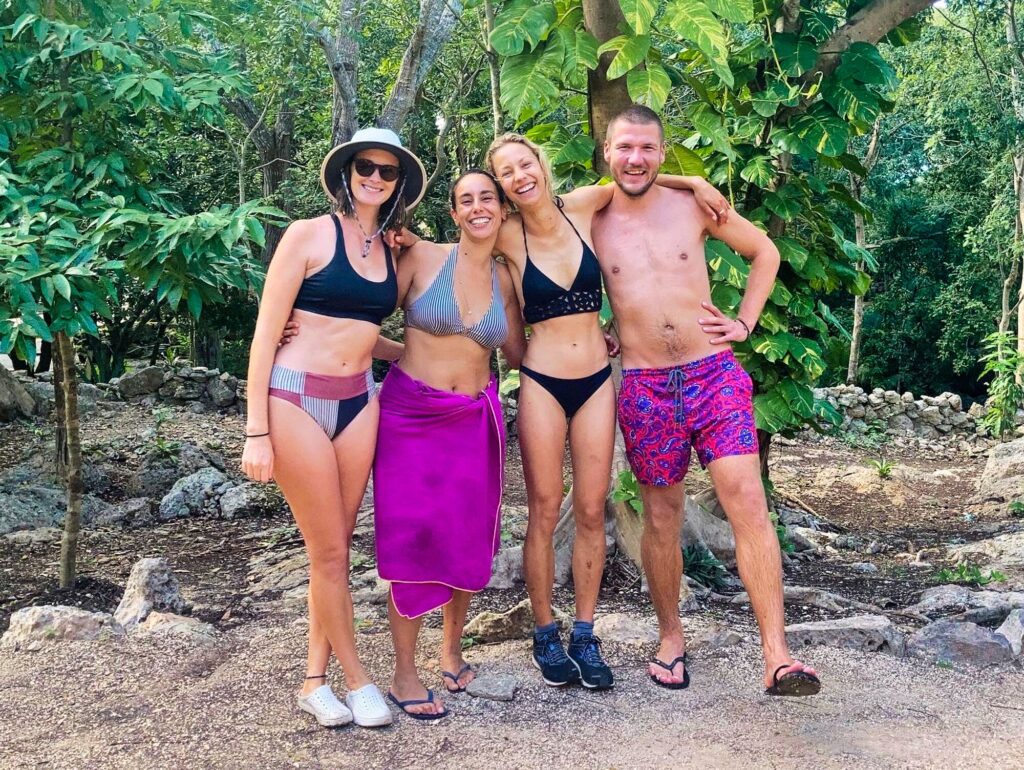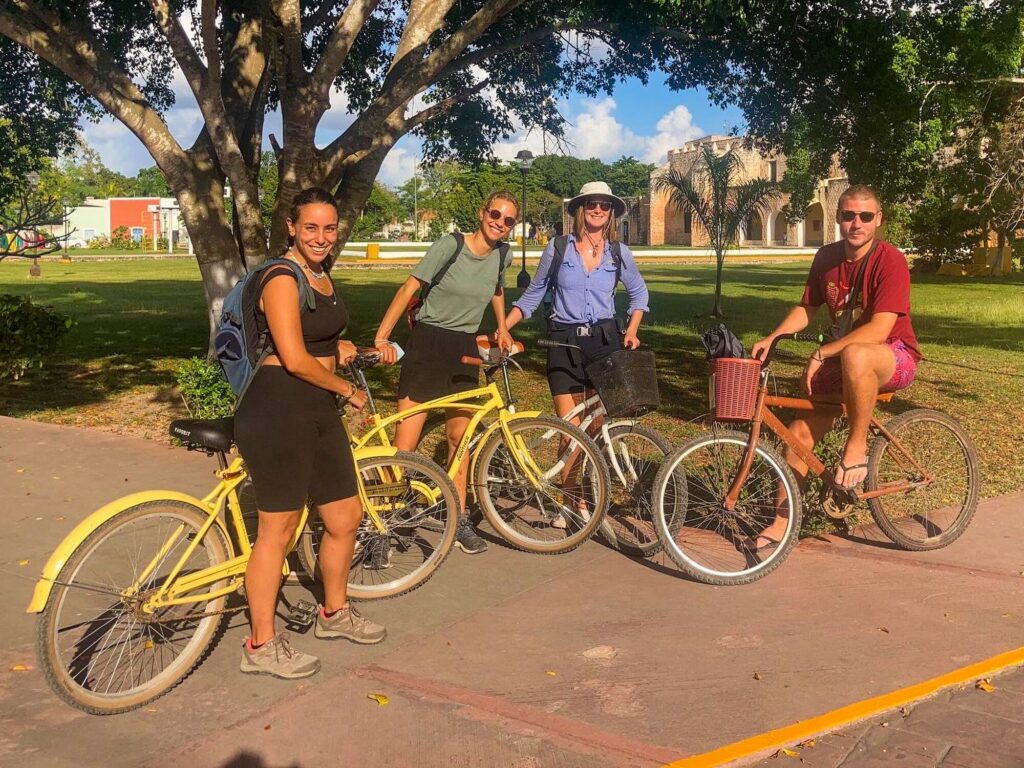After recovering from the stomach flu in Bacalar, I was ready to move on to a new city, so I hopped on the bus to Valladolid, located in the middle of the Yucatan Peninsula. It took a couple of hours to get there and make my way to the hostel. After checking in, I decided to explore the town a little on foot and was surprised at such a wonderful contrast to the beach towns along the coast. Valladolid was filled with beautiful historic buildings displaying colorful exteriors.
Having not eaten yet, I wound up in a restaurant called La Palapita de Los Tamales. The inside of the restaurant was as stunning as the rest of the town and beautifully decorated. As I’m sure you could guess by the name, the restaurant primarily serves tamales, so I asked the waiter to bring whatever the most popular one was. I was a bit surprised at the style of tamale, which was wrapped in a banana leaf and contained large chunks of meat, vegetables, and even an entire hard-boiled egg. Apparently, this is a style unique to the Mayans and a bit different from the Mexican tamales that I was used to.
After lunch, I joined a free walking tour of the town which mainly consisted of the main square, and then walking along a side street to a catholic convent. The square is neighbored by a beautiful church built with masonry using stones that were a bit unusual for this style of building, as they were various shapes and sizes, not a uniform brick shape. From our tour guide, we learned the square was originally home to a Mayan pyramid that the Spanish disassembled and reconstructed into a church.
The tour continued onto a cobblestoned street called Calzada de Los Frailes, which seemed to be straight out of Instagram. The street was lined with colorful restaurants and shops. We learned this was the path that the friars took beginning in the 16th century to a neighboring town of Sisal where a convent was constructed to convert the natives. After the tour ended, I spent some time poking my head into each of the shops and restaurants and was disappointed to find prices had been adjusted for tourism and were quite expensive.
The following day I had planned to rent a bike from the hostel and explore some of the local cenotes near town. I was on the fence about paying for an expensive tour group or braving it and going alone. Although I consider myself an experienced traveler, I try not to put myself in potentially vulnerable situations and tend to air on the side of caution. Luckily, I sat down for breakfast with a couple of girls who happened to be planning the same kind of day. Carla was a doctor from Germany and Sabrina was a French photographer, but also living in Germany, both were in their late 20s. So, we rented some bikes and set off on our adventure!
Our first stop was Cenote Tekom, about 45 minutes south of Valladolid. I was really impressed with the bike path and enjoyed the shade from all the trees lining the route. We arrived in the small town of Tekom and navigated to the location shown on the map, but couldn’t find anything resembling a cenote. Finally, we spotted a small sign in a park that led to a small, gated staircase. The man at the entrance confirmed we had found the cenote and charged us a small fee to enter. We followed the staircase down into the cave as the room opened up into a large, circular cavern about 100 feet or more in diameter. The cenote was completely enclosed with no natural light and the staircase ended at a wooden platform over the water, where we stood in awe of this natural wonder. To make it even better, we were the only ones there!
Fearing an onslaught of tour buses, we quickly changed and dove into the crystalline water. The water was a bit cold but super refreshing after the sweaty, hour-long bike ride to get there. We swam for about 10 minutes then dried off and decided to make a stop for some coffee and pastries where we were joined by another guy from Germany, whose name I can’t remember. He was about 20 minutes behind us in getting to the cenote and complained of a tour bus that had just arrived before him, crowding the small space. So, it sounds like we had lucked out with our timing!
We continued for another 30 minutes and arrived at two neighboring cenotes called Dzitnup and Xkeken. Don’t ask me how to pronounce them! We hoped maybe we would luck out again and get the cenote to ourselves, but were disappointed to find very commercialized cenotes with vendors lining the road as we pulled up. One vendor guided us to an area for bike parking and tried to sell us some coconuts, but we brushed him off and said maybe when we return. We purchased entry to both cenotes which cost around 150 pesos, or $9, then were charged another $2 per person per cenote to rent life jackets. Unfortunately, at the more commercial cenotes, they require you to wear a life jacket if you want to get in the water at all. The cenotes were quite similar with large caverns and a small opening at the top, letting in beams of light. The ceilings and walls were covered in stalactites and hanging roots with the same, crystal-clear water I had seen at the other cenotes. Although both cenotes were beautiful, the life jacket situation combined with the crowd of tourists severely took away from the ambiance and experience. Not to mention the vendor that yelled at us for not buying his coconuts when we returned, saying he had even watched over our bikes for us (even though they were already securely locked up).
Although there were a handful of other cenotes to see within biking distance, a quick Google search confirmed my suspicions that they were highly commercial as well, charging expensive entry fees and requiring life jackets for swimming. Also, after riding on our old, rusty bikes all morning, my booty was getting sore and couldn’t stand much more. So, we decided to head back to town and grab an early dinner. Overall, I was incredibly impressed with Valladolid and hoped to bring Eitan’s mom back here if I had a chance the following week. After two nights, it was time to finally head to Playa del Carmen to meet up with Eitan and his family!
